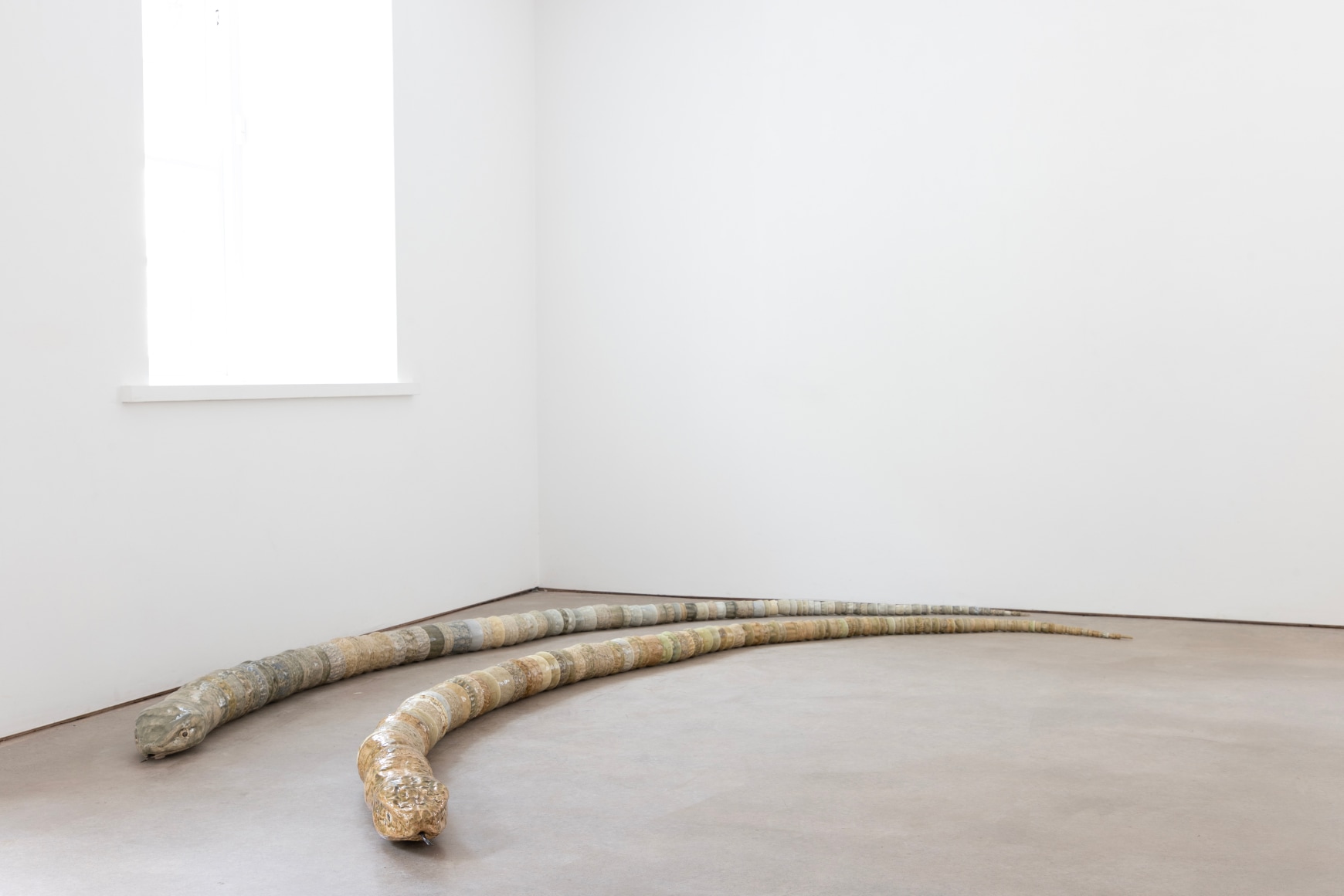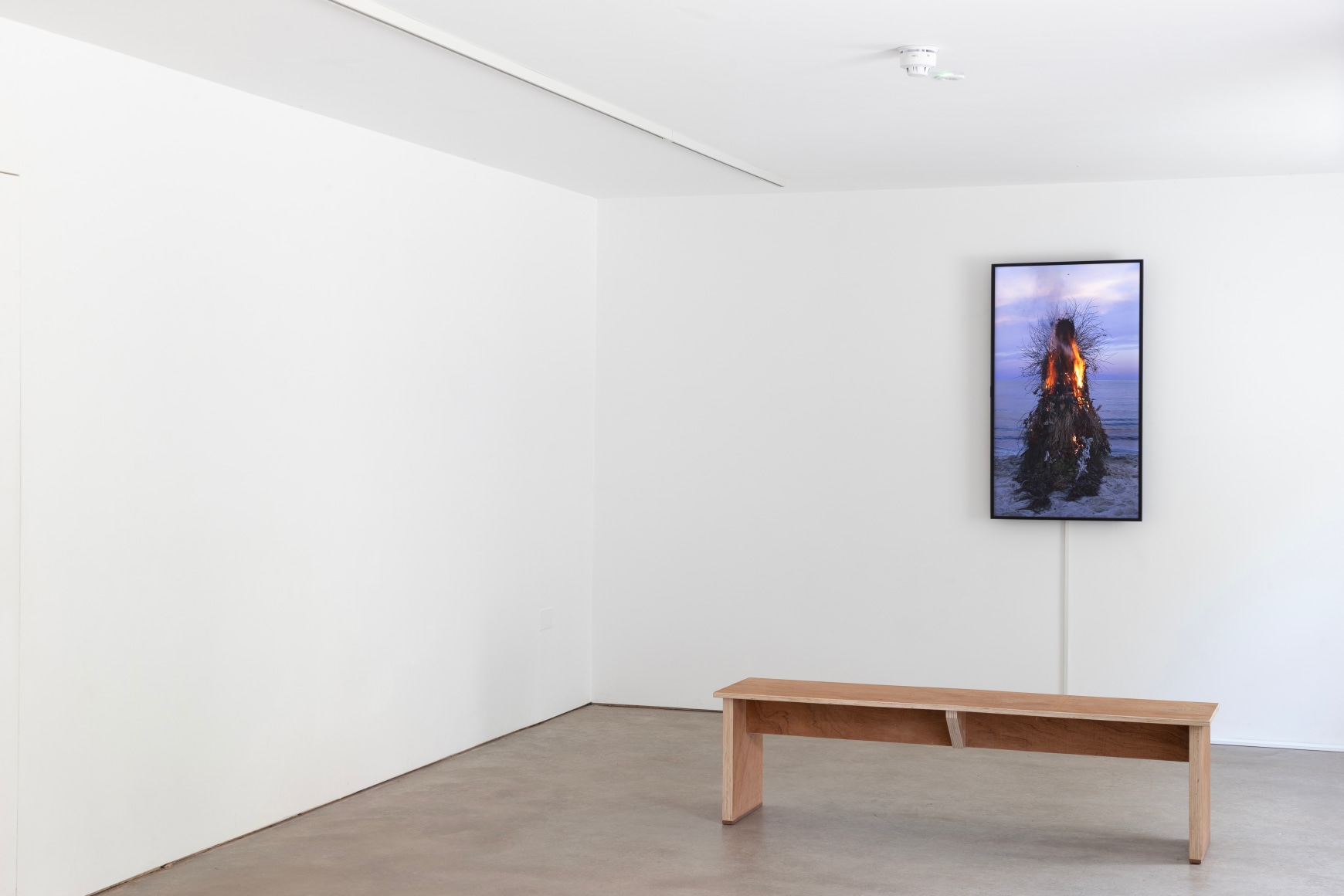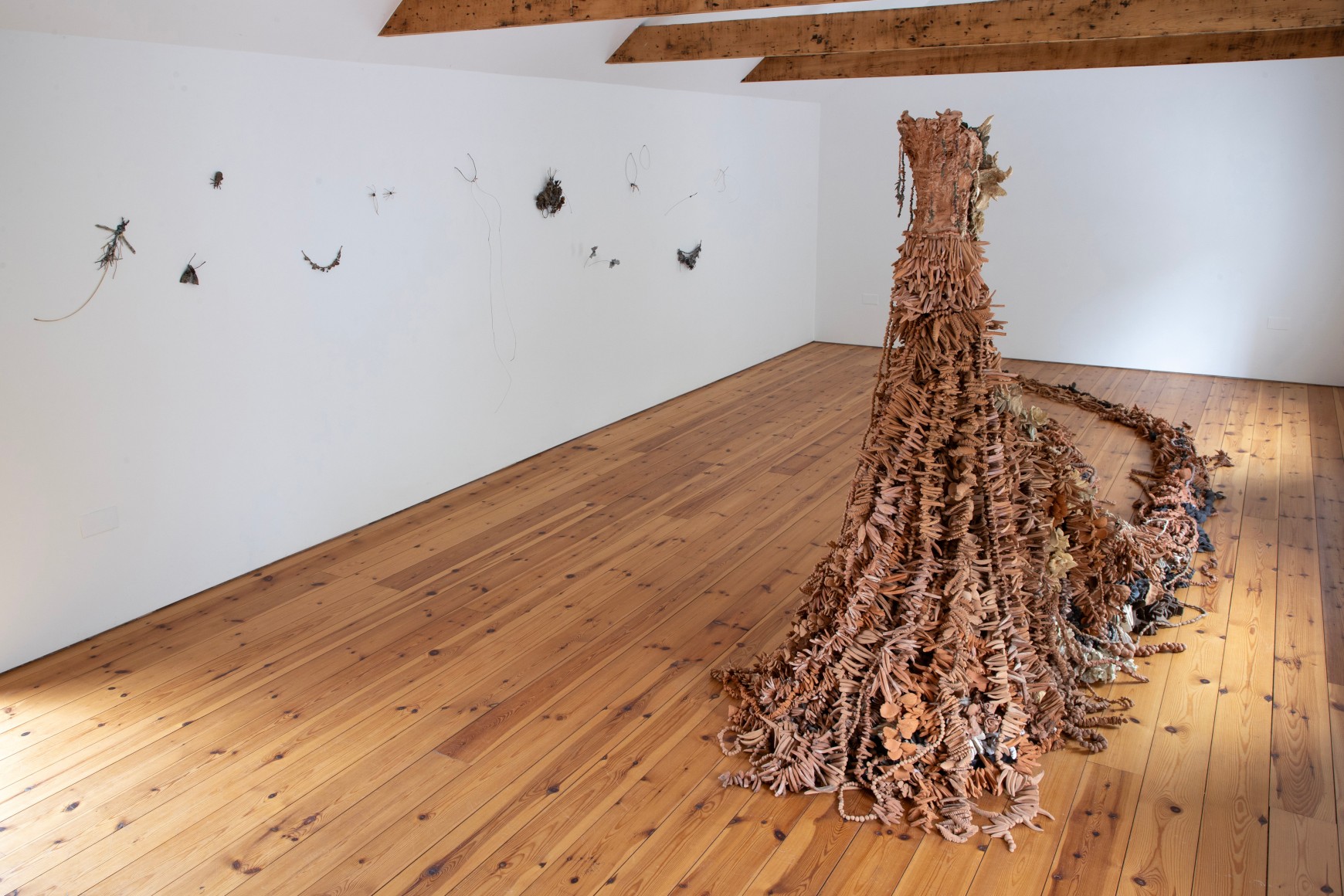This autumn, we are delighted present murmur, buzz, hiss and rub, a solo exhibition by artist Chiara Camoni (born 1974, Piacenza, Italy) at CAMPLE LINE. The exhibition brings together over 20 works by Chiara, from the monumental to the tiny, and includes three new works made using clays, soils and plant matter from Cample and nearby villages.
Chiara is one of the foremost Italian artists of her generation, and she lives and works in the mountain village of Fabbiano in Northern Tuscany, Italy. She has said of her practice: ‘Everything stems from a personal fact – the choice to live in a village in the Apuan Alps – this has become a political choice to some extent.’ Her studio practice represents a commitment to live and work beyond major urban centres and to root the production of her sculptural work in the local economy and community. Working with friends and family and members of her village, Camoni uses diverse materials, including raw clay, stone, flowers and plants sourced near her home, as the basis for a wide-ranging body of work that has been exhibited extensively internationally.
Georgia Massari has referred to Camoni’s work as ‘a dance between ancient knowledge and everyday knowledge, in which nature plays a prominent role.’ Her works combine vernacular, archaic and ancestral forms, often collapsing the boundaries between the human and more-than-human. These concerns have coalesced in her Sister series (2017 onwards) in particular – monumental female divinities that assume varying zoomorphic and anthropomorphic forms. Of the Sisters, Chiara has said: ‘they are female figures, but I would say that they encompass a little bit of everything…the masculine, the animal, the vegetable, the mineral…Each has its own bearing, has its own attitude and they ask us for a relationship.’
Chiara has previously described her exhibitions as assemblies or gatherings of eyes, of figures, of presences, of animals, of insects – ‘some visible right away, other emerging slowly.’ Typically working between her studio, her home and her garden, her practice is attuned to more-than-human frequencies and speaks of a dynamic co-presence between species and beings.
Chiara has said: ‘I get the feeling that people not only look at my work, but that my works look at people, and that the works look at each other, almost as if there was a web of looks and relationships developing…I like to think there’s a strong communicability from one realm to another, from one form to another.’
Upstairs at CAMPLE LINE, Chiara has installed the monumental Sister, 2023, built with threaded handmade ceramic beads and other terracotta and ceramic elements, around which she gathers a group of Gioielli – tiny, small-scale sculptures that reference spiders, small insects and winged creatures and have been made by melting pieces of jewellery –a pair of self-portrait drawings, and a set of five Vasi Farfalla, including a new diptych glazed with clays and soils from around Cample and Penpont.
On the ground floor, visitors encounter Burning Sister, 2024, a new film by Chiara featuring a Sister form that she built outdoors using botanical matter whilst participating in Makryammos Ephemeral Art Residency in Thassos. Close by, Due Serpenti, 2024, animates the entrance space alongside two Grande Sorella, large necklace-like sculptures.
Murmur, buzz, hiss and rub is Chiara’s first exhibition in Scotland, and is accompanied by a newly commissioned short essay by independent curator and academic Cecilia Canziani. Over their long friendship, Chiara and Cecilia have worked together on numerous exhibitions, editorial projects, performances, and travelling seminars.
(Source)




